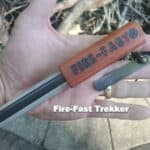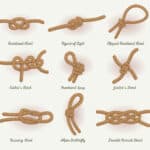Ham radio, or amateur radio, is a way people communicate in emergencies when other systems are down. This kind of communication has been key to helping during big disasters around the world.
For example, ham radio operators played a vital role during Hurricane Maria by making it possible for different areas to talk to each other and aid teams. To start prepping and get involved in this important work, one must first obtain a Technician Class license.
These operators use specific frequencies, especially HF, for talking over long distances and VHF/UHF for more local communication needs like weather reporting through Skywarn nets. Groups such as the Amateur Radio Emergency Service (ARES) and the Radio Amateur Civil Emergency Service (RACES) rely on amateur radio during crises.
Other organizations like the American Red Cross and The Salvation Army Team Emergency Radio Network (SATERN) also use these radios to help out in disasters across various locations using these special frequencies.
Dive into how ham radios provide crucial links where others fail..
Table of Contents
Importance of Ham Radio in Emergency Situations
Moving from the basics, ham radio shines brightly during emergencies. Cell phones and internet services often fail in disaster zones, leaving people without a way to communicate. This is where amateur radio steps in.
It offers a reliable means for emergency communication when other systems are down.
Amateur radio operators can quickly set up networks to send messages and share important information. They assist “served agencies” like FEMA and the Red Cross by providing vital links between disaster sites and outside help.
For instance, during Hurricane Maria, hams played a crucial role in keeping communications alive when most lines were broken or overloaded. Their ability to transmit voice and digital data across distances makes them invaluable in crisis situations.
Ham Radio’s Role in Past Emergencies
Ham radios have been lifesavers in many crises, like Hurricane Maria. Operators quickly set up networks to help when other systems failed.
Response to Hurricane Maria
Amateur radio operators were a key part of the communication efforts after Hurricane Maria. They set up stations where phones and the internet didn’t work. Their gear included HF transceivers and antennas, all kept safe in waterproof boxes.
These teams talked with the mainland and shared important news about health and safety in Puerto Rico.
They also used specific frequencies to send messages over long distances or within smaller areas for different tasks, like weather reports through Skywarn nets. This help was crucial for groups like ARES, RACES, CERT, and the American Red Cross during their work on the island.
Required Amateur Radio License for Emergency Communications
To join the ranks of radio amateurs in emergency communications, one must have a Technician Class license. This is the gateway to getting started in public service and handling emergency signals.
Getting this license shows you know the basics and are ready to help when needed. The FCC requires all who transmit on amateur frequencies to have a license, ensuring everyone follows set rules for safe and effective communication.
There are three levels of ham radio licenses: Technician, General, and Extra. Each level allows more access to different frequencies. Starting with the Technician License is essential for anyone wanting to contribute to disaster response through ham radio.
It’s not just about having the gear; it’s about proving you can use it responsibly during critical times.
Frequencies Utilized in Emergencies
In emergencies, ham radio operators use specific frequencies. These frequencies allow them to communicate over long distances and within local areas.
- HF (High Frequency) Bands: HF bands are key for long-distance communication. During events like Hurricane Maria, operators used HF to connect Puerto Rico with the mainland. This is vital when the internet and phone lines are down.
- VHF (Very High Frequency) and UHF (Ultra High Frequency): These are for closer, more localized communication. VHF and UHF help in coordinating local emergency responses. They’re also used for severe weather reporting through Skywarn nets.
- Winlink System: This allows sending emails over radio frequencies. It’s crucial during disasters when regular internet service is not available.
- National Weather Service Frequencies: Ham operators receive important updates on these frequencies. They then share this info with the public and emergency services.
- ARES (Amateur Radio Emergency Service) Frequencies: ARES teams have specific frequencies they use during disasters to coordinate relief efforts.
- RACES (Radio Amateur Civil Emergency Service) Frequencies: These are set aside by the federal government for official emergency communications.
- SATERN (The Salvation Army Team Emergency Radio Network): They use designated frequencies to manage their disaster relief operations efficiently.
Each frequency band plays a major role in ensuring effective communication during emergencies, making them an invaluable resource for ham radio operators involved in disaster preparedness and response.
Emergency Organizations Utilizing Amateur Radio
Emergency groups like ARES and The Salvation Army count on amateur radio to help during crises. Read more to see how they do it!
Amateur Radio Emergency Service (ARES)
ARES, short for Amateur Radio Emergency Service, is a key player in emergency communications. Volunteers from ARES step in when disasters hit, and normal communication lines fail. They use ham radios to send messages and coordinate help.
These operators are trained and ready to respond at any time. Their skills proved vital during Hurricane Maria, making sure people could get the assistance they needed.
Local amateur radio clubs work closely with ARES. Together, they plan for emergencies and offer their services to the community. This teamwork ensures that when a disaster strikes, trained volunteers are on call to maintain critical communication pathways.
Through their efforts, ARES plays an essential role in emergency management and response across regions impacted by natural or man-made disasters.
Radio Amateur Civil Emergency Service (RACES)
Radio Amateur Civil Emergency Service, or RACES, plays a key role during emergencies. It works with groups like FEMA and the military to keep communication lines open. Ham operators in RACES help at places like shelters and operations centers.
They use radios that can work even when other systems fail. This service is vital for safety and rescue efforts after disasters.
RACES operators often go to areas where regular services don’t reach. They make sure people can get help and information during tough times. Next up, let’s talk about the American Red Cross’s use of amateur radio.
American Red Cross (ARC)
The American Red Cross (ARC) teams up with groups that handle emergencies. They use amateur radio to talk during disasters. This helps when phones and the internet don’t work. The ARC knows how useful ham radio is in these tough times.
Amateur radio provides a reliable way to communicate for the ARC and other groups. They count on it heavily during natural disasters or big accidents. These emergency signaling techniques for rescue can be a lifeline, allowing them to coordinate rescue efforts and help those in need quickly.
The Salvation Army Team Emergency Radio Network (SATERN)
SATERN stands strong in emergency situations, using HF, VHF, and UHF frequencies to keep lines of communication open over both long distances and locally. This network taps into traditional voice modes alongside the Winlink system for swift digital message and file sharing.
During disasters, SATERN shines by delivering key health-and-welfare updates to the Red Cross and giving timely reports on infrastructure conditions.
Working hand-in-hand with organizations like ARES and RACES, SATERN’s trained members are always ready to step in. They offer vital support, ensuring that information flows smoothly during crises.
This makes them a crucial asset when preparing for natural disasters, showcasing their ability to adapt through a broad range of communication techniques.
Conclusion
Ham radios stand as a beacon of hope in emergencies and should be in your emergency kit. They link people when all else fails, proving their value time and again during disasters. The journey to becoming an operator is clear—get licensed, join a team, and be ready to help.
These radios are more than old tech; they’re lifelines that pull communities together when it matters most. Let’s keep the lines open and the conversation flowing, for in every emergency, communication can make all the difference.






















Leave a Reply